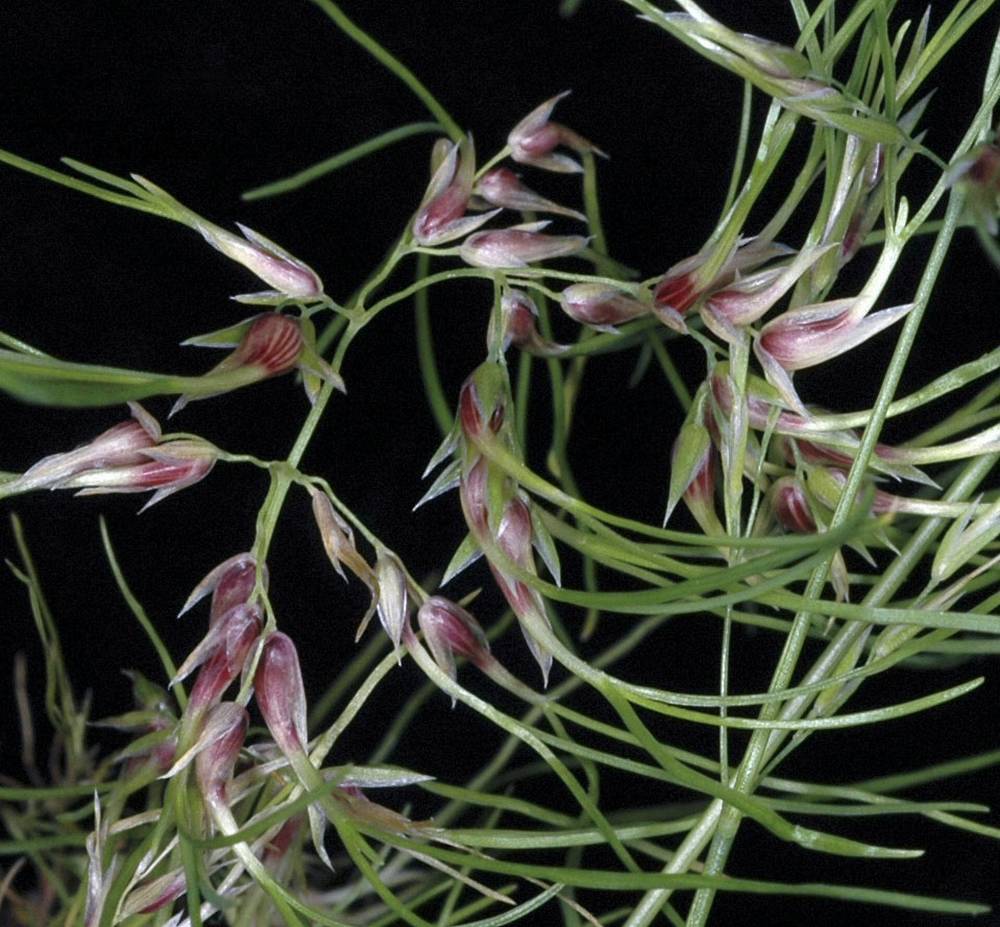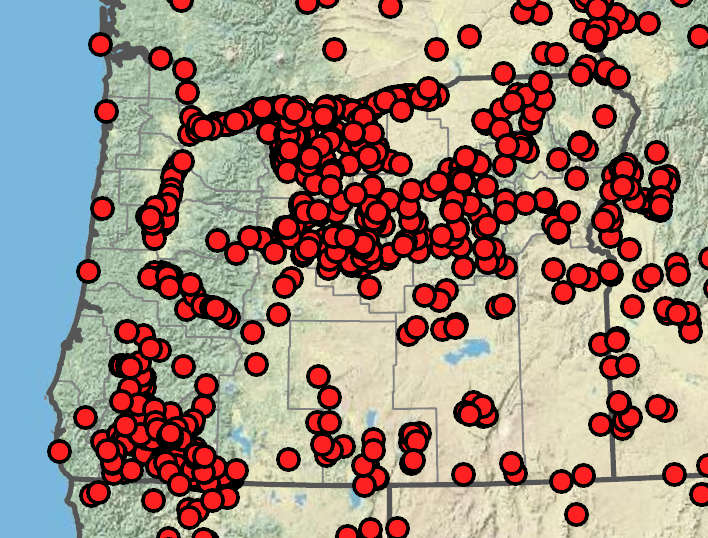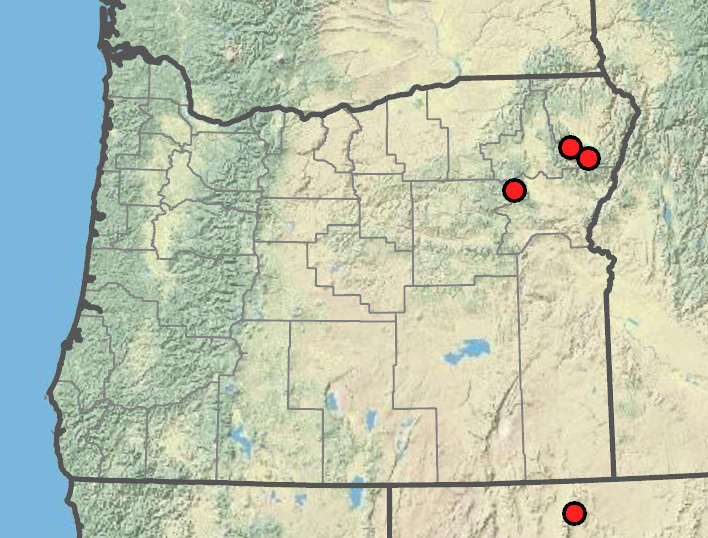Poa bulbosa
Poa reflexa
bulbous bluegrass
nodding bluegrass
bulbous at the base;
nodes terete.
intravaginal.
intraand extravaginal.
sheaths closed about 25% of their length;
basal sheaths swollen at the base;
ligules 1–3 mm;
blades flat, 1–2.5 mm wide; soon withering.
sheaths closed 33–50% of their length; smooth;
ligules 1.5–3.5 mm;
blades flat, 1.5–4 mm wide.
ovoid, 3–12 cm;
branches 2–5 per node, ascending to spreading.
nodding; open, 4–15 cm;
branches spreading to reflexed, flexuous; (2)3–7 cm, 1–2 per node; smooth to sparsely scabrous, with (3)6–18 spikelets.
3–5 mm;
florets 3–7, commonly all or all but the lowest producing bulblets, occasionally all producing seeds.
lanceolate to broadly lanceolate, 4–6 mm, usually partly to wholly purplish;
florets 3–5.
keels scabrous;
lower glumes 3-veined;
upper glumes shorter than or subequal to lowest lemma.
narrowly to broadly lanceolate;
keels smooth or nearly so;
lower glumes 1-veined;
upper glumes shorter than or subequal to lowest lemma.
with cobwebby hairs or glabrous.
with cobwebby hairs.
lanceolate, 3–4 mm, distinctly keeled, glabrous throughout, or keels and marginal veins shortto long-villous; area between veins glabrous or softly puberulent;
tips acute.
lanceolate, 2–3.5 mm, partly to mostly purple colored, distinctly keeled;
keels short- to long-villous for over 67% of their length; marginal veins short- to long-villous;
lateral veins usually sparsely softly puberulent at least on one side; area between veins smooth;
tips acute, slightly bronze colored or not.
developed and 1.4–2 mm, or aborted late in development, or not developed.
0.6–1 mm.
=21–42.
Poa bulbosa
Poa reflexa
Sunny to partly shady disturbed grasslands, shrub steppe, roadsides. 0–2300 m. All ecoregions except Est. CA, ID, NV, WA; throughout US; Mexico; temperate regions worldwide. Exotic.
Poa bulbosa is usually recognized by the bulblets produced in the inflorescence. Occasional non-bulblet-producing plants can be recognized by their bulb-like shoot bases and the presence of bulb-bearing individuals nearby. Some botanists recognize two subspecies, P. b. ssp. bulbosa producing only normal caryopses and P. b. ssp. vivipara, producing bulblets. In Oregon, populations either are entirely viviparous or include both viviparous and seed-producing plants.
Subalpine and alpine meadows, streamsides, talus slopes. 1000–2600 m. BW. ID, NV; northeast to MT, southeast to NM. Native.
Poa reflexa is a rare subalpine bluegrass similar to P. leptocoma. Poa leptocoma grows in wetter habitats and has glabrous lateral lemma veins and scabrous panicle branches.
Rob Soreng, Barbara Wilson, Richard Brainerd, Nick Otting
Rob Soreng, Barbara Wilson, Richard Brainerd, Nick Otting
- Local floras:
BC,
CA,
OR,
WA
- Local Web sites:
CalFlora,
CalPhotos,
Flora NW,
PNW Herbaria
WildflowerSearch
iNaturalist (observations)
USDA Plants Database
- LBJ Wildflower Center
- SEINet
- Plants of the World Online
- Encyclopedia of Life
- Wikipedia
- Google Image Search




